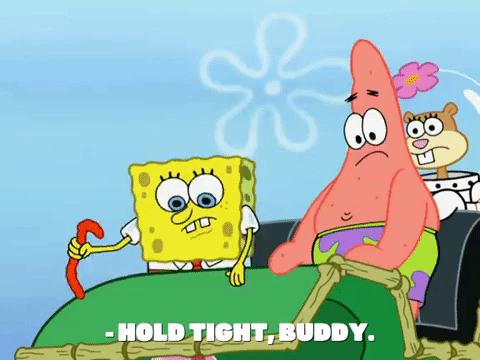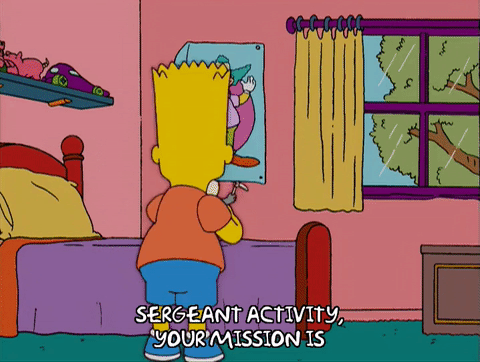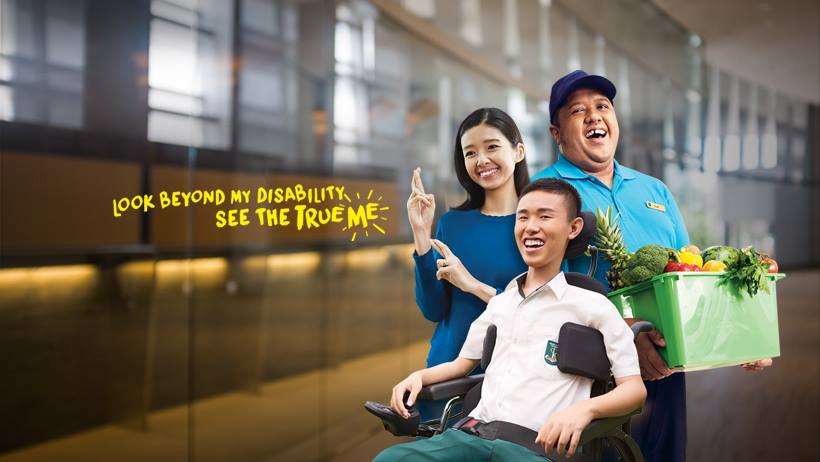Last month, we helped you become a less awkward person.
This month, it's time to up your game even more.
The National Council of Social Service has created a handy guide that will help you and I learn a great deal more than we currently do about our friends with disabilities.
The guide covers various types of disability (yeah fyi, disabled ≠ wheelchair-bound), and is easy enough to be browsed in five minutes.
Five minutes, all it takes to become a better person? You bet.
Here's a sneak peek at some of the things that surprised us (in a good way, of course) - things we never in our lives expected would make such a massive difference to our friends with disabilities.
1) Before helping persons with physical disability, a gentle heads-up goes a long way

With wheelchair users or those using mobility aids, always check with them (a simple "May I help you?" will suffice) before helping to push them up a ramp or through an MRT gantry.
Sometimes a sudden change of balance may surprise them and cause an accident.
2) When guiding persons with visual impairment, allow them to hold your elbow (not the other way round)

It may not occur to us, but persons with visual impairment may need to keep their arms free for balance, or to hold a white cane. It is therefore not such a good idea to hold them, but instead let them hold you by your elbow.
Also, try to be pay close attention to your surroundings, and remember that their walking pace ≠ yours.
3) If there is someone in your meeting who is Deaf or hard of hearing, speak OAAT please

For most of us, it’s hard having to listen to multiple speaking at once during a group discussion. So what more if one is Deaf or hard of hearing, and has to rely on reading lips?
Unless you’re talking about an expert lip-reader with compound vision and an innate ability to multitask, all at the same time. Otherwise, take turns, get the attention of the person who is Deaf or hard of hearing, and speak one-at-a-time, please.
4) Setting matters when interacting with a person with autism

Some persons with autism may get overwhelmed in crowded areas or places with many distractions. It’s called sensory overload. If they appear uncomfortable, it’s not because they are upset with you or do not wish to communicate.
Perhaps it’s just better to adjourn to somewhere quieter or more private before continuing the conversation.
5) Persons with intellectual disabilities don’t think any less; they just think differently

You’ll find it tons easier to communicate with a person with intellectual disability once you realise this fact.
Oftentimes, all it takes when he/she doesn’t really get you, is to try communicating in a different way. For example, if words and speech don’t seem to work, try putting your point across using physical objects instead.
--
We’re not saying you need to get this right the very first time (or that you always will subsequently), especially since it’s not every day we get to interact with a friend with a disability.
But at least you’ve gained an awareness of something new today.
Now, go forth and make the world a better place.
The journey doesn’t stop there. Find out much more about interacting with persons with disabilities here. This sponsored article, in collaboration with the See the True Me campaign by NCSS, makes us Singaporeans more woke.
If you like what you read, follow us on Facebook, Instagram, Twitter and Telegram to get the latest updates.
